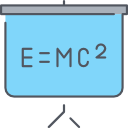
Buku
The Power Of Feminist Art
Since its inception in the early 1970s the Feminist Art movement has presented a challenge to mainstream modernism that has radically transformed the art world. Early feminist art precipitated sweeping and fundamental changes – the conscious designation of female values and experiences as a legitimate basis for the creation of “high” art, the challenge to the hegemony of modernist abstraction by the postmodern appreciation of diversity, as well as the return of serious content – both political and personal – to mainstream art, among others. rnrnThe book documents and defines the critically important originating phase of the movement in the USA, bringing together influential art historians, critics, and artists who participated in the events of the 1970s. It follows the development of the movement as seen in the various feminist organizations, networks, exhibitions, and publications it operated, such as the first feminist art education programs with initiating artists Judy Chicago and Miriam Schapiro, the Womanhouse project or "Women Artists: 1550-1950," a banner exhibition organized in 1976 by art historians Linda Nochlin and Ann Sutherland Harris. Most particularly the book documents the emergence of feminist art in multiple forms like performance art, social protest and public art. The last section of the book traces the ups and downs of the movement, as experienced through the backlash of the 1980s and the resurgence of women's issues in the 1990s.
Ketersediaan
Tidak ada salinan data
Informasi Detil
- Judul Seri
-
-
- No. Panggil
-
701.03 Bro P Ref
- Penerbit
- New York, USA : Harry N. Abrams, Inc.., 1994
- Deskripsi Fisik
-
319 p
- Bahasa
-
English
- ISBN/ISSN
-
0-8109-3732-8
- Klasifikasi
-
701
- Tipe Isi
-
-
- Tipe Media
-
-
- Tipe Pembawa
-
-
- Edisi
-
-
- Subyek
- Info Detil Spesifik
-
-
- Pernyataan Tanggungjawab
-
-
Versi lain/terkait
Tidak tersedia versi lain
Lampiran Berkas
Komentar
You must be logged in to post a comment
 Computer science, information & general works
Computer science, information & general works
 Philosophy & psychology
Philosophy & psychology
 Religion
Religion
 Social sciences
Social sciences
 Language
Language
 Pure Science
Pure Science
 Applied sciences
Applied sciences
 Arts & recreation
Arts & recreation
 Literature
Literature
 History & geography
History & geography